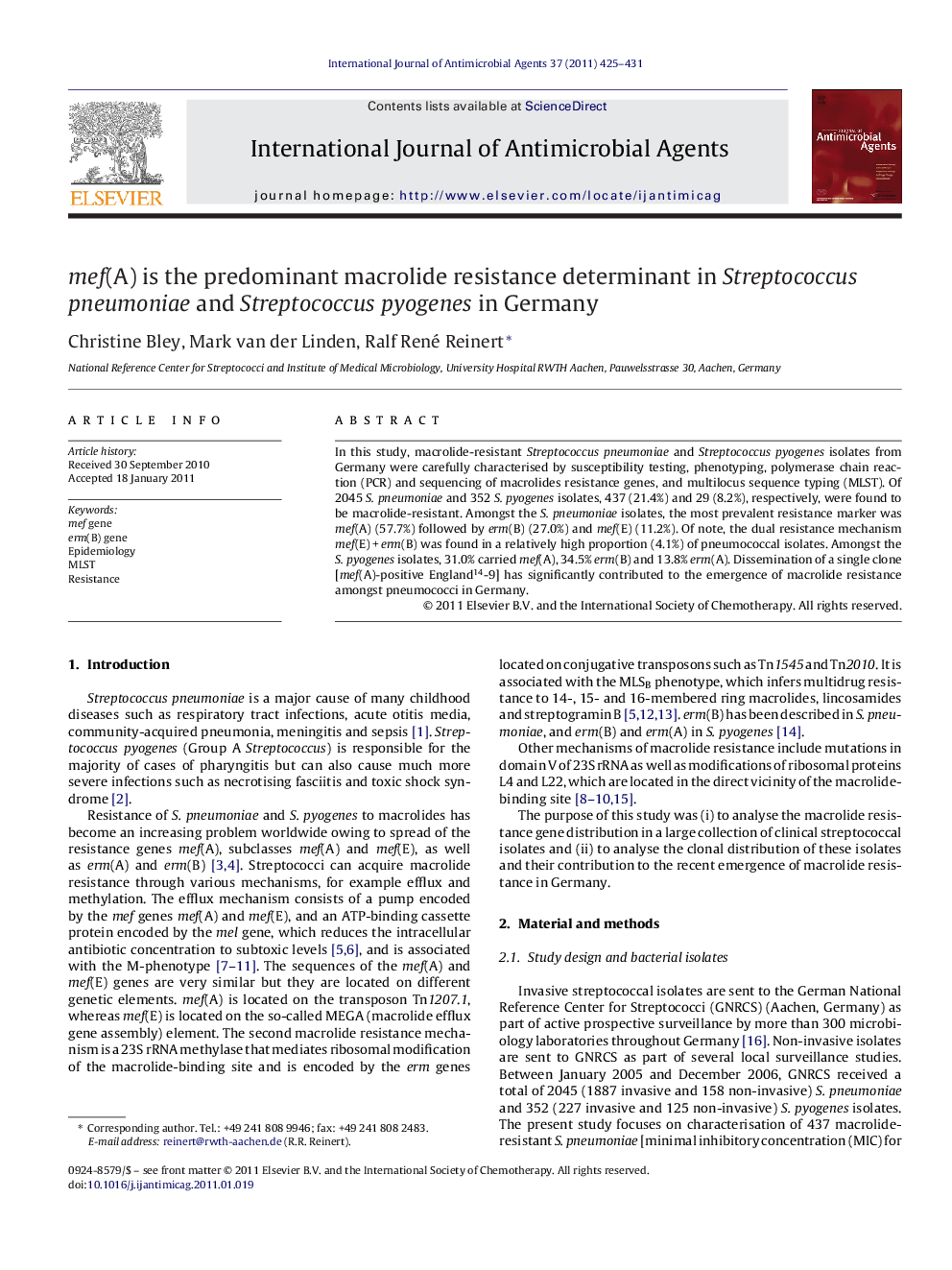| Article ID | Journal | Published Year | Pages | File Type |
|---|---|---|---|---|
| 6118416 | International Journal of Antimicrobial Agents | 2011 | 7 Pages |
Abstract
In this study, macrolide-resistant Streptococcus pneumoniae and Streptococcus pyogenes isolates from Germany were carefully characterised by susceptibility testing, phenotyping, polymerase chain reaction (PCR) and sequencing of macrolides resistance genes, and multilocus sequence typing (MLST). Of 2045 S. pneumoniae and 352 S. pyogenes isolates, 437 (21.4%) and 29 (8.2%), respectively, were found to be macrolide-resistant. Amongst the S. pneumoniae isolates, the most prevalent resistance marker was mef(A) (57.7%) followed by erm(B) (27.0%) and mef(E) (11.2%). Of note, the dual resistance mechanism mef(E)Â +Â erm(B) was found in a relatively high proportion (4.1%) of pneumococcal isolates. Amongst the S. pyogenes isolates, 31.0% carried mef(A), 34.5% erm(B) and 13.8% erm(A). Dissemination of a single clone [mef(A)-positive England14-9] has significantly contributed to the emergence of macrolide resistance amongst pneumococci in Germany.
Keywords
Related Topics
Life Sciences
Immunology and Microbiology
Applied Microbiology and Biotechnology
Authors
Christine Bley, Mark van der Linden, Ralf René Reinert,
